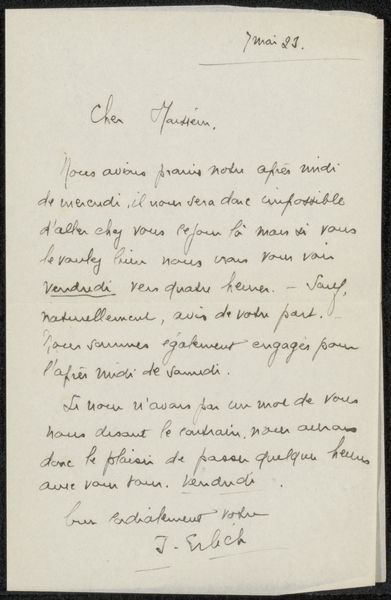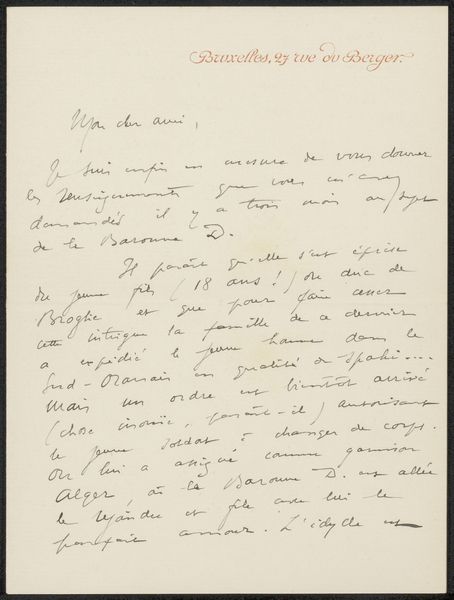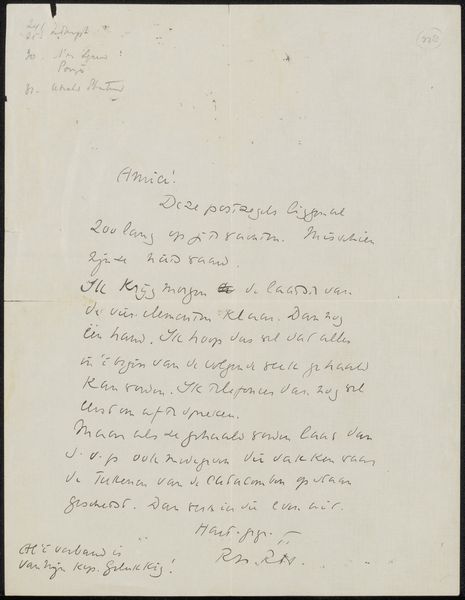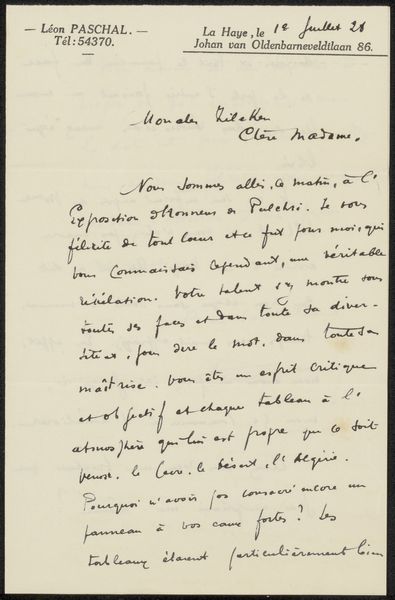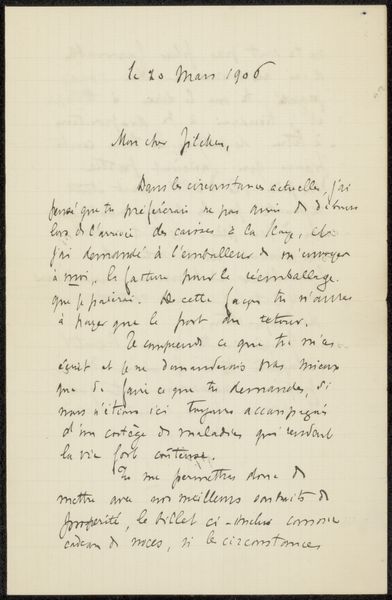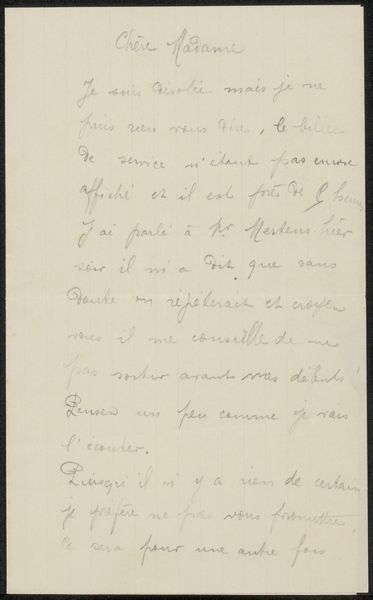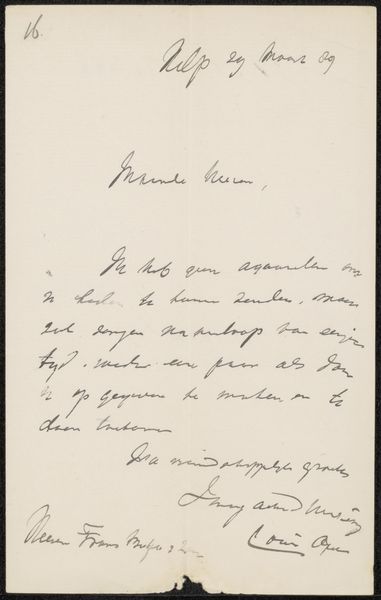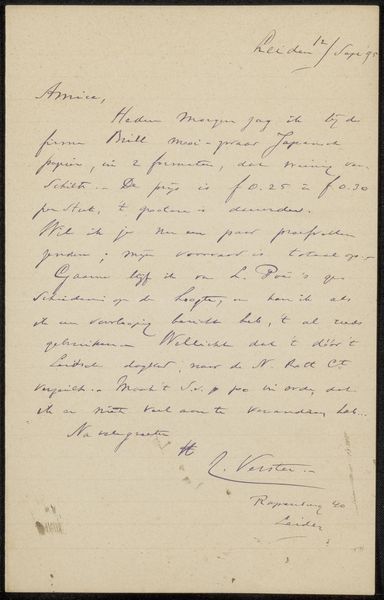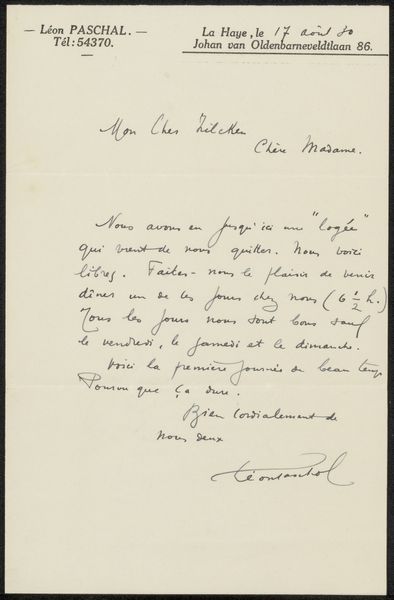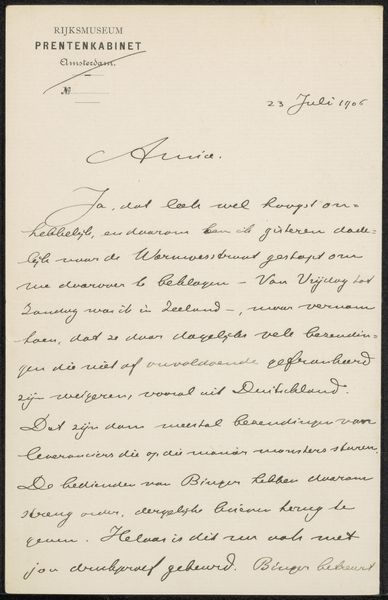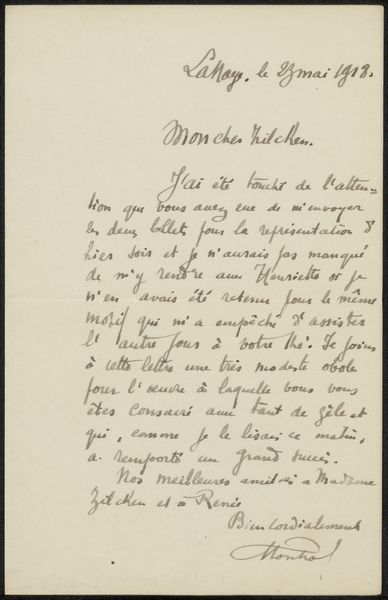
drawing, paper, ink
#
drawing
#
paper
#
ink
#
calligraphy
Copyright: Rijks Museum: Open Domain
Curator: This is "Brief aan Philip Zilcken," or "Letter to Philip Zilcken," possibly from the period of 1912 to 1917, crafted by Léon Paschal using ink on paper. The elegance of handwriting, you could say, transcends mere utilitarianism here and aspires towards art, albeit on a modest scale. Editor: Modest, but striking. Look at how the blue ink contrasts with the aged paper. It's an intimate object. The writing itself, that looping script, feels almost sculptural. It reminds me that writing too is a material process, subject to the pressures of time, the consistency of the ink, the skill of the hand... Curator: Precisely. As a document of personal correspondence, the letter allows us insight into the cultural milieu of Paschal and Zilcken, and their connection is particularly suggestive. Was Zilcken an editor, a critic perhaps? The mention of correcting an "article sur le Lloyd" opens doors to exploring intellectual networks of the era. The material, ink on paper, serves not just as a surface, but as the very skin bearing witness to these exchanges. How would Paschal and Zilcken characterize their own socioeconomic positions, I wonder? Editor: It definitely highlights class distinctions inherent in intellectual work. Not everyone had access to fine paper and blue ink! But think about the labor, the meticulous craft required for beautiful script. We easily dismiss calligraphy today as merely decorative. But there's labor involved, a skill cultivated over time—visible and material. It reflects access and skill. Curator: Yes, the very act of creating and receiving letters fostered an intimacy and exchange so different from our current, digital, reality. These historical class barriers you mention impact even the ways one could write; how much paper was wasted for a draft, for instance, might highlight one's position. And beyond that, what did Paschal and Zilcken have in common regarding their personal lives? Exploring the circumstances and contexts might expose larger societal biases. Editor: Absolutely, looking closely at what survives gives clues about the networks that support art production itself. The material conditions, even the style of handwriting become evidence about access, opportunity, and artistic intention. Even the reference to the Lloyd tells us a lot about possible trade, financial ties, or an exchange network dependent on the information. Curator: So, it's more than just words on paper, isn't it? This letter is really a confluence of personal connection and material record—each speaking volumes. Editor: Yes. Every stroke and mark represents labor, status, and communication interwoven in time. The residue is fascinating.
Comments
No comments
Be the first to comment and join the conversation on the ultimate creative platform.
